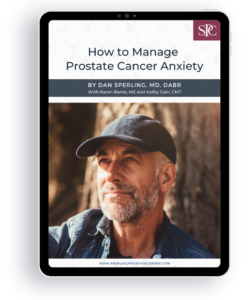Who is the world’s leading prostate cancer expert? How does one even begin to answer that question? There are so many great minds dealing with prostate cancer from so many angles: biology, urology, radiology, oncology, pathology and more—it’s impossible to identify a single authority on the subject.
However, when great minds work together, powerful consensus ideas emerge like guiding beacons. They help researchers, clinicians, and patients navigate the complex landscape of prostate cancer. A phenomenal U.S. collaboration is the National Comprehensive Cancer Network® (NCCN®). To fulfill its mission of improving cancer care in order to offer patients better lives, this alliance of 31 leading cancer centers strives to “define and advance high-quality, high-value, patient-centered cancer care globally.”
The recognized experts from member institutions are authorities on their specialty areas of cancer. They team up to issue and update guidelines on each type of cancer. These detailed documents carry great weight as doctors everywhere develop treatment plans that serve their patients’ best interests.
For prostate cancer (PCa), the past decade has seen increased awareness of how men’s quality of life has been damaged due to overdetection and overtreatment of low risk PCa. During the same period, advances in biomarkers have help identify which patients can safely go on Active Surveillance (AS) and which need immediate treatment. Thanks to multiparametric MRI, we can show patients what their PCa looks like, and discuss with them which treatment approaches will fit best with their clinical needs and their lifestyle preferences. As a result, more and more qualified low risk patients chose AS in order to defer treatments with undesirable side effect risks. Thus, the numbers of AS patients surged.
A small change sparks a big reaction
In 2019, NCCN guidelines listed AS as a “preferred” choice for low-risk disease. This meant it actually ranked higher than the traditional choices of radical prostatectomy (RP) and beam radiation! Suddenly, the 2021 guidelines have a “minor adjustment”, according to Edward “Ted” Schaeffer, MD, PhD, chairman of the PCa guidelines panel.[i] The small change to which he refers is dropping the word “preferred.” Basically, this means putting AS on the same level as RP and radiation for low-risk patients.
This revision has ruffled the feathers of some important urologic experts. According to a medical news item, two of them—among the most well-respected names in the PCa landscape—are protesting:
Matthew Cooperberg, MD, a urology professor at the University of California San Francisco (UCSF), sees the change as “a step backward” in the quarter century campaign to reduce overdiagnosis and overtreatment of low-risk prostate cancer.
“I believe we should be carefully expanding the pool for active surveillance, not narrowing it,” said Stacy Loeb, MD, a professor of urology at New York University and the Manhattan Veterans Affairs Medical Center.[ii]
Although Dr. Loeb’s institution is not a member of NCCN, Dr. Cooperberg’s is the Urology Chair at UCSF’s Helen Diller Family Comprehensive Cancer Center, which is a member of NCCN. Furthermore, Dr. Cooperberg is also a faculty member of the prestigious educational group Grand Rounds in Urology. (As an interesting side note, one of our radiology colleagues, Dr. Jelle Barentsz (Radboud University, The Netherlands) is a member of Grand Rounds in Urology. His faculty profile states that he is an “internationally recognized researcher known for developing, validating, and implementing new MRI techniques in oncology.”)
Well, there you have it – some of the world’s leading prostate cancer experts disagree. It only took a one-word change to spark debate on the power of a simple language change to influence how doctors will discuss AS with their patients, and how patients will perceive it.
At our own Center, we are confident that our multiparametric MRI-based protocol for identifying AS candidates, and monitoring them, makes AS a safe and feasible choice for low- and very low-risk PCa patients. We understand that personal preference is more important than whether AS is labeled as preferred or not. Our clinical excellence supports an individual’s choice for AS. In addition, if early detection of a more aggressive PCa direction triggers a treatment decision, we have a portrait of the tumor’s history, as well as its size, shape and location. Before choosing RP or radiation, our in-bore MRI-guided targeted biopsy, and our mpMRI case records, can help a patient decide if he’s qualified for a focal treatment such as our Focal Laser Ablation (FLA).
We believe the word “preferred” could appropriately remain in the NCCN guidelines on PCa, because we know how to preserve AS as a secure and comfortable option for its candidates.
Download Our Free Ebook: “How to Manage Prostate Cancer Anxiety”

Don’t let anxiety over prostate cancer run you. Instead, learn how you can take charge and empower yourself to manage stress and boost positive treatment outcomes with our “first aid kit” of practical tips and tools.
NOTE: This content is solely for purposes of information and does not substitute for diagnostic or medical advice. Talk to your doctor if you are experiencing pelvic pain, or have any other health concerns or questions of a personal medical nature.
References
[i] Wolinsky, Howard. “One-Word Change in Prostate Cancer Guidelines Has Some Urologists in Arms.” MedPage Today, Oct. 4, 2021. https://www.medpagetoday.com/special-reports/apatientsjourney/94840
[ii] Ibid.


